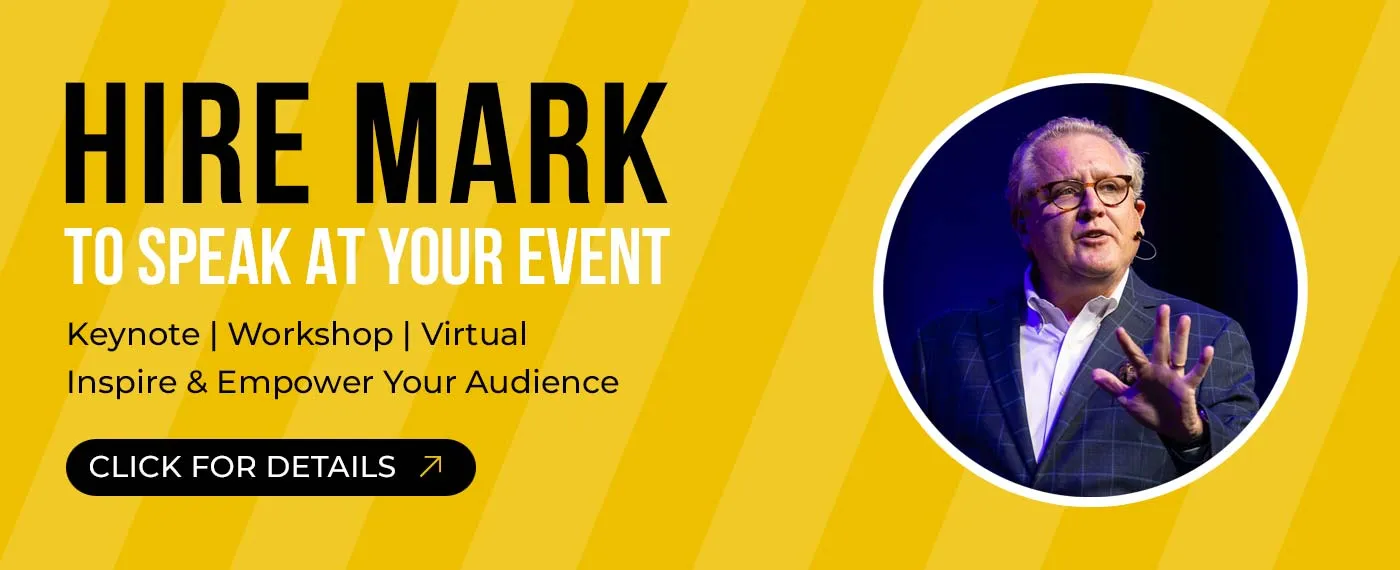It’s all about the conversation.
Have you heard that a thousand times? It’s a ubiquitous mantra of the social web to the point where sometimes I think it takes over as the ultimate goal. It’s not the goal. The goal of any organization is to increase shareholder value … a.k.a. make money. Even non-profits.
Whether you work for a company, a hospital, a university, or a non-profit, peel the onion enough and it all gets down to marketing and money. So how did we get hung up on the social media “conversation” as a goal of its own? What is the future of the social media “conversation?” And is it really a conversation at all …
In the beginning, there was conversation
Business has always been about conversations.
The first markets were places where people gathered to exchange information and goods, a city market or a town square. Supply met demand with a firm handshake. Buyers and sellers looked each other in the eye, met, and spoke directly to each other without the filter of media, the positioning of marketing, the arrogance of advertising, or the shading of public relations.
So the idea that social media conversation is revolutionary is untrue. The conversation was always there. It simply got interrupted for a few decades by the introduction of broadcast media! Social media allows us to start to reclaim the conversation with our customers, even in a global marketplace.
Marketing, interrupted
Beginning with radio and then TV, companies discovered the efficiency of moving from selling soap and cereal through local producers to manufacturing mass quantities and marketing through mass media. Undoubtedly it worked — and still does — with powerful efficiency. But at the same time, the conversations were still happening … without the benefit of the local marketplace.
In this era, approximations for market conversations had to be created. This was the Golden Age of polling and focus groups. We had to create conversations when we lost the community marketplace.
The Conversation Renaissance
The market conversation that became lost in the mass media megaphone was found again in the quiet discussions in geeky chat rooms and news exchanges on the first Internet sites.
In 1999, a seminal and visionary book, The Cluetrain Manifesto was published. Christopher Locke and his co-authors saw that this new technology could help us re-capture these historic market conversations, as it stated:
“‘In the early 1990s, there was nothing like the Internet we take for granted today. Back then, the Net was primitive, daunting, uninviting. So what did we come for? And the answer is: each other. The Internet became a place where people could talk to other people without constraint. Without filters or censorship or official sanction — and perhaps most significantly, without advertising.”
When Cluetrain was written, there were just 50 million people on the Internet, most of them AOL dial-up accounts. And yet it correctly foretold the potential for mass conversation, the opportunities for marketing, and the inherent fear traditional advertisers would have of giving up control of the dialogue.
Conversation as god
Within 10 years of The Cluetrain Manifesto, two trends collided that not only re-energized the idea of “conversation,” but elevated it to rockstar status. First was a critical mass of diverse demographic categories actually accessing and using the Internet.
Second was the emergence of user-friendly, fun, and helpful sharing sites that collectively became known as “social media.” This allowed people to quickly and easily connect, comment, and PUBLISH. For the first time in history, our civilization could conduct free, global, instantaneous conversations. It was a revolution.
An influential book in this period, Groundswell by Josh Bernoff and Charlene Li was a wake-up call to both the dangers of ignoring the social conversation and the economic opportunities of immersion.
Early social media bloggers such as Chris Brogan pioneered a “purist” movement that placed the sanctity of “the conversation” above any business or commercial interests. The conversation became a sacred trust that stood above any profit motive. “Social media is not about you and your stupid company,” he once famously said a few years ago.
Corporate influence and mainstream rationality
The popularity of social platforms naturally attracted large corporations, advertisers and SEO alchemists. By 2009 companies both large and small joined the social media frenzy trying to make sense of the unprecedented amount of direct consumer information that was flooding the airwaves.
The purist’s mantra began to die out as social media went mainstream and companies began to ask “how do we make money on this stuff?” Conversation was nice as long as it was linked to conversions. Conversation seemed to be happening everywhere. The challenge became making sense of it.
Sophisticated “listening programs” emerged that could slice and dice consumer sentiment, monitor competitor activities, detect shifts and trends, excavate potential problems and, perhaps most important, begin to link consumer online activity with market influence.
The once and future conversation
Has the social web re-connected the consumer conversation? Has technology re-established a medieval sense of knowing your customer to the point of anticipating needs and knowing your customer’s extended influence?
To some extent. But let me provide one short example of how social media can only complement, not replace, actual customer conversations.
In the mid 1990s I was a marketing director for a multi-billion-dollar product that was a linchpin for both my company and our customer’s supply chain. It was so important that we organized annual “listen to the customer” visits with a cross-section of our global customers.
These were more than casual conversations. We went through a formal training program to teach us how to probe and listen intently. The sessions were conducted with a minimum of three people from my company so we could cross-examine each other and compare notes at the end of each meeting. This was a customer conversation on steroids.
One year, my team had traveled around the globe and ended the series of meetings with a group of experts and scientists at a Fortune 100 consumer product company. In the last hour of the last meeting, on the last stop of our tour, one of the scientists mentioned in an off-handed remark that he had seen a preliminary report from an obscure lab indicating a possible health concern with one of the components of our packaging material. We were all tired and ready to wrap up, but there was something about the scientist’s tone of voice, or maybe a nuance in his body language that made me think that we needed to know more about this issue. So we kept probing and learned from him for another 45 minutes.
Although there were still many questions about the research, we learned enough to immediately begin a multi-year, multi-million-dollar effort to re-formulate our product with components that were deemed safe by the emerging research.
By the time this research was indeed validated and appeared on the front page of the Wall Street Journal – ten years later — we had converted all of our customers to the new, safe product. It was a non-event.
No. Actually, it was a significant event, wasn’t it? It was a historic turning point for our company and our customers that never would have occurred without the intense effort we put into that effort to listen and understand. And it never would have happened had we relied only on something like social media listening tools for our “conversation.”
Conversation without insight is meaningless … simply chatter.
The hidden costs of conversation
Another challenge of the New Age conversation is keeping it aligned with the goals of the company.
In a recent interview, McDonald’s Social Media Director Rick Wion said that consumers now have their favorite McDonald’s company tweeters and look for opportunities to get online and gab with them about everything and anything.
Certainly this interaction can humanize a brand. But at the end of the day, is paying your employees to be a psychotherapist to a lonely widow in Pittsburgh going to sell hamburgers? Is that the company’s core business? And when does it end? Do you keep adding people to have infinite conversations?
Rick mentioned the possibility of providing automated tweet responses to some questions. This upends the notion of conversation and puts us back into broadcast mode, doesn’t it?
Hijacking the conversation
A third risk of the New Media Conversation is that it opens the opportunity for extremists to hijack the agenda. There are people who may want to harm your brand for no reason other than they want to get attention in a very sick way. Are you prepared for that? Can a small company with limited resources concentrate on the .00001% of the population who wants to destroy you?
I recently spoke to a colleague who told me that a small Christian college is now bringing in lawyers to deal with a hater who has set up a Facebook page to attack the institution, and even individual faculty members. This is not the ideal use of its marketing dollars but certainly a cost of the New Age Conversation we all need to be prepared for.
The end of social media conversation?
While the social web was the key enabler to “conversation” the channel is starting to look more and more like a mass media channel isn’t it? For proof of this, look at the list of the Top 10 You Tube videos from 2010 — most of them slickly-produced corporate mini-movies … also known as ads.
What are the most popular Facebook pages? Kind of like a who’s who of America’s Biggest Advertisers. Remember that until a few years ago, companies were not even allowed on Facebook.
In fact, there is very little real “conversation” between customers and companies taking place on the social web. There may be news, reviews, rants, and remarks. Complaints, status updates, tweets, and comments. Observations, explanations, interpretations, and salutations … and companies need to be in the middle of it … but there are precious few actual conversations that would lead to a market insight like the one I explained in my packaging company example.
Social interaction offers an inexpensive and broad way to paint a high level view of a market sentiment but only the laziest marketer will think this is enough to really do the job right. Social media is not the new conversation. That conversation has been out there as long as there have been people trading goods and more than ever, you need to get out there, see your customers, listen to them intently, and respond quickly, sensitively, and passionately to their wants and needs. Go have a REAL conversation.
What do you think? Are conversations happening out there for you on the social web? Are there examples where social media can replace traditional customer conversations? I would love to hear your views from your part of the world!
Note: The links to Groundswell and Cluetrain are affiliate links. I mean, why not?



